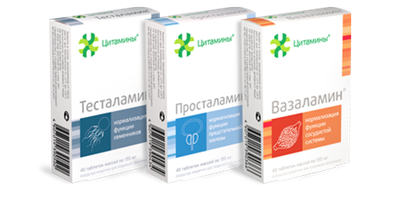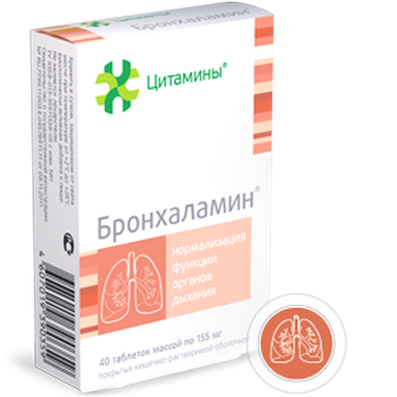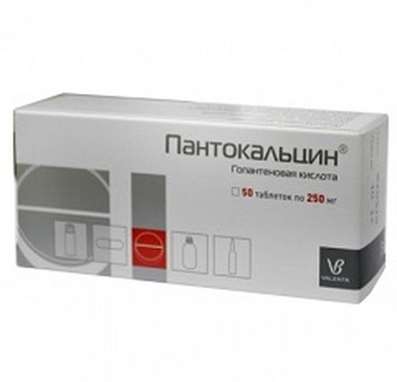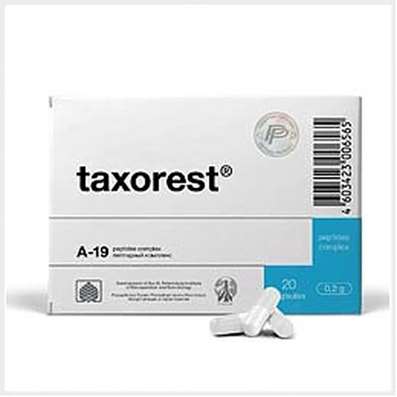Instruction for use: Phencarol
I want this, give me price
Dosage form: Solution for intramuscular injection; Tablets
Active substance: Quifenadine*
ATX
R06A Antihistamines of systemic action
Pharmacological groups:
Antiallergic agent - H1-histamine receptor blocker [H1-antihistamines]
The nosological classification (ICD-10)
J30 Vasomotor and allergic rhinitis: Allergic rhinopathy; Allergic rhinosinusopathy; Allergic diseases of the upper respiratory tract; Allergic rhinitis; Allergic rhinitis seasonal; Vasomotor runny nose; Prolonged allergic rhinitis; All-year-round allergic rhinitis; All-year allergic rhinitis; Year-round or seasonal allergic rhinitis; All-the-year-round rhinitis of an allergic nature; Rhinitis vasomotor allergic; Exacerbation of pollinosis in the form of rhinoconjunctival syndrome; Acute allergic rhinitis; Edema of the nasal mucosa; Edema of the nasal mucosa; Edema of the mucous membrane of the nasal cavity; Swelling of the nasal mucosa; Swelling of the nasal mucosa; Pollinosis; Permanent allergic rhinitis; Rhinoconjunctivitis; Rhinosinusitis; Rhinosinusopathy; Seasonal allergic rhinitis; Seasonal allergic rhinitis; Hay rhinitis; Chronic allergic rhinitis; Allergic diseases of the respiratory tract
J30.1 Allergic rhinitis caused by pollen of plants: Hay fever; Hay fungus; hay fever; Hypersensitivity to pollen of plants; Polyposis allergic rhinosinusitis; Seasonal pollinosis; Seasonal rhinitis
L20 Atopic dermatitis: Allergic diseases of the skin; Allergic skin disease noninfectious etiology; Allergic skin disease etiology nemikrobnoy; Allergic skin diseases; Allergic skin lesions; Allergic reactions on the skin; atopic dermatitis; Allergic dermatosis; Allergic diathesis; Allergic itching dermatosis; Allergic skin disease; Allergic skin irritation; allergic Dermatitis; atopic Dermatitis; allergic dermatoses; exudative diathesis; Itchy atopic eczema Itchy allergic dermatosis; Allergic skin disease; Cutaneous allergic reaction to drugs and chemicals; Cutaneous reactions to medications; Skin and allergic disease; Acute eczema; common neurodermatitis; Chronic atopic dermatitis; Exudative diathesis
L29 Itching: Itching with partial obstruction of the biliary tract; Dermatitis itchy; Dermatosis with persistent itching; Other itching dermatoses; Itching dermatoses; Itching allergic dermatosis; Itching dermatitis; Itching dermatosis; Itching itch; Excruciating itching; Severe itching; Endogenous itching; Skin itching with dermatosis; Restricted itchy dermatitis; Itching of the skin; Itchy scalp; Itching eczema
L30.9 Unspecified Dermatitis: Allergic dermatoses complicated by a secondary bacterial infection; Anal eczema; Bacterial maturation; Varicose Eczema; Venous dermatitis; Inflammation of the skin; Inflammation of the skin upon contact with plants; Inflammatory Skin Disease; Inflammatory Skin Diseases; Inflammatory Skin Diseases; Inflammatory skin reactions; Inflammatory processes of the skin; Hypostatic dermatitis; Fungal Eczema; Fungal dermatosis; Dermatitis; Dermatitis is stagnant; Dermatitis and eczema in the anal area; Dermatitis acute contact; Perianal dermatitis; Dermatosis; Dermatosis of the scalp; Dermatosis of psoriasis; Dermatosis with persistent itching; Dermatoses; Dermatoses itchy; Other itching dermatoses; Significant eczematous manifestations; Itching with dermatoses; Itching eczema; Itching dermatoses; Itching dermatitis; Itching dermatosis; True eczema; Skin reaction to insect bites; Skin itching with dermatosis; Constitutional eczema; Weeping eczema; Drowsing inflammatory skin disease; Dying Infectious-Inflammatory Skin Disease; Non-allergic dermatitis; Nummular eczema; Acute contact eczema; Acute inflammatory skin disease; Acute dermatosis; Acute severe dermatosis; Perianal dermatitis; Superficial dermatosis; Subacute Contact Eczema; Simple dermatitis; Occupational dermatitis; Psychogenic dermatosis; Bubble dermatitis of newborns; Pustular eruptions; Irritation and redness of the skin; Low-flammable eczema; Dry atrophic eczema; Dry eczema; Toxic dermatitis; Ear eczema like dermatitis; Chronic eczema; Chronic dermatosis; Chronic dermatosis; Chronic common dermatosis; Scaly papular dermatosis; Eczema; Eczema anal region; Eczema of the hands; Eczema Contact; Eczema lichenized; Eczema Nummular; Eczema acute; Eczema acute contact; Eczema subacute; Eczematous dermatitis; Eczema-like rashes; Ecome exogenous; Endogenous eczema; Gluteal dermatitis; Limited itching dermatitis
L40 Psoriasis: Chronic plaque psoriasis with diffuse; generalized psoriasis; Psoriasis of the scalp; hairy parts of the skin; A generalized form of psoriasis; Psoriazoformny dermatitis; Psoriasis complicated with erythroderma; disabling psoriasis; Isolated psoriatic plaque; Eksfolliativny psoriasis; psoriatic erythroderma; Psoriasis with eczematization; Hyperkeratosis in psoriasis; Inverse psoriasis; Psoriasis ekzemopodobnye; dermatoses psoriazoformny; Psoriasis genitals; Psoriasis lesions with hairy areas of the skin; erythrodermic psoriasis; Chronic psoriasis of the scalp; Chronic psoriasis; ordinary psoriasis; refractory psoriasis; Koebner phenomenon; psoriasis
L50 Urticaria: Idiopathic chronic urticarial; Injury Urticaria; Chronic urticarial; Hives of the newborn
T78.3 Angioedema: Edema Quincke; Laryngeal exacerbation with angioneurotic edema; Recurrent angioedema; Allergic edema; Recurrent swelling of Quincy
Composition
Solution for intramuscular injection 1 ml
active substance: Hifenadine (phencarol base) 10 mg
(In terms of 100% of the substance)
Auxiliary substances: glutamic acid - 6.26 mg; Water for injection - up to 1 ml
Tablets - 1 table.
active substance: Hifenadine hydrochloride 10 mg; 25 mg; 50 mg
Auxiliary substances: potato starch - 14.5 / 40.5 / 74 mg; Sucrose - 25 / 33.5 / 55 mg; Corn modified corn starch - - / - / 20 mg; Calcium stearate - 0.5 / 1/1 mg
Description of dosage form
Solution: clear, colorless liquid.
Tablets: round planocylindrical, white or almost white, with a bevel.
Pharmachologic effect
Mode of action - decongestant, antiallergic, antipruritic, antiexudative.
Pharmacodynamics
The active substance of the drug hifenadin - blocker of H1-histamine receptors, - prevents the development and facilitates the course of allergic reactions. Has antiallergic, antiexudative and antipruritic action, preventing the development of allergic inflammation in the tissue. Weaken the effect of histamine, reduce its effect on vascular permeability (reducing permeability, has anti-edematous effect), reduces its bronchospastic effect and spasmogenic effect on the smooth muscles of the intestine, weakens the hypotensive effect of histamine. Hyphenadine reduces histamine content in tissues (due to the ability to activate diaminoxidase - an enzyme that inactivates histamine). At course treatment, the antihistamine effect of hifenadine does not decrease. Has a moderate antiserotonin effect, shows a weak m-cholinoblocking activity. Does not exert a depressing effect on the central nervous system.
Pharmacokinetics
Solution for the IM introduction
After the IM introduction, the solution is rapidly absorbed and Cmax of hifenadine in the blood plasma is reached after 30 minutes. Hifenadine has low lipophilicity, poorly penetrates the BBB. The highest content of active substance is found in the liver, slightly less in the lungs and kidneys, the lowest in the brain (less than 0.05%, which explains the absence of pronounced sedative and hypnotic effect). The drug is metabolized in the liver, forming inactive metabolites, which are excreted mainly by the kidneys.
Tablets
45% of hifenadine is rapidly absorbed from the gastrointestinal tract and within 30 minutes it is found in the tissues of the body. Cmax of the active substance in the blood plasma is achieved after 1 hour. It has low lipophilicity, poorly penetrates through the BBB. The highest content of active substance is found in the liver, slightly less in the lungs and kidneys, the lowest in the brain (less than 0.05%, which explains the absence of depressing effect on the central nervous system). Hyphenadine is metabolized in the liver. Metabolites are excreted by the kidneys and intestines. The non-absorbed part of the drug is excreted from the intestine.
Indication of the drug Phencarol
Solution for the IM introduction
In the case of severe course and the need for / m use of antihistamines in the following conditions and diseases:
Pollinosis;
hives;
Angioedema (angioedema) (angioedema).
Tablets
Pollinosis;
Acute and chronic urticaria;
Angioedema;
Allergic rhinitis;
Dermatoses, incl. Eczema, psoriasis, neurodermatitis, itchy skin.
Contraindications
For all dosage forms
Individual intolerance to hifenadine, hypersensitivity to any of the components of the drug;
pregnancy;
The period of breastfeeding.
With caution: diseases of the digestive tract, liver and kidneys.
In addition to the solution for the IM introduction
Children's age till 18 years.
With caution: decompensated SSS.
Additionally for tablets
Deficiency of sugar / isomaltase, intolerance to fructose, glucose / galactose malabsorption, t. LS contains sucrose;
Children under 3 years (tablets, 10 and 25 mg), up to 18 years (tablets, 50 mg).
Application in pregnancy and breastfeeding
It is not recommended to apply throughout pregnancy.
If it is necessary to treat the drug, breastfeeding should be discontinued.
Side effects
The drug is well tolerated. It is rare to dry the mucous membrane of the mouth, nausea, vomiting, drowsiness, allergic reactions, headache.
Interaction
It does not increase the depressing effect of alcohol and hypnotics on the central nervous system. Possessing weak M-holinoblokiruyuschimi properties, can reduce the motility of the gastrointestinal tract and increase the absorption of slowly absorbed drugs (for example, anticoagulants of indirect action - coumarin derivatives).
Dosing and Administration
Solution for the IM introduction
IM.
SC administration is not used because of irritant action.
Pollinosis: 2 ml (20 mg) 2 times a day for 3 days, then 2 ml (20 mg) once a day for 2 days. The total duration of treatment is 5 days.
The maximum single dose is 20 mg; The maximum daily dose is 40 mg.
Urticaria and angioedema (Quincke's edema): 2 ml (20 mg) 2 times a day for 5 days, then 2 ml (20 mg) once a day for 3 days. The total duration of treatment is 8 days.
The maximum single dose is 20 mg; The maximum daily dose is 40 mg.
After relief of acute allergic reactions it is recommended to switch to the use of Fenkarol in the form of tablets.
Tablets
Inside, after a meal.
The dosage regimen of the preparation coincides with all indications for use. The dosing of hifenadine may be affected by the severity of the allergic reaction, the individual sensitivity of the patient, as well as the severity of possible side effects.
Adults - 50 mg 1-4 times a day or 25 mg 2-4 times a day. The maximum daily dose is 200 mg. The duration of the course of treatment is on average 10-20 days. If necessary, repeat treatment.
Children from 3 to 7 years - 10 mg 2 times a day; From 7 to 12 years - 10-15 mg 2-3 times a day; Over 12 years old - 1 table. 25 mg 2-3 times a day. The duration of the course is 10-15 days.
Overdose
Symptoms: dry mucous membranes, headache, vomiting, abdominal pain and other dyspepsia.
Treatment: symptomatic. It is necessary to rinse the stomach, take activated charcoal, immediately consult a doctor.
Special instructions
The absence of an expressed holinoblokiruyuschey effect allows you to prescribe the drug to patients who are contraindicated with antihistamines that have anticholinergic activity.
Children. Children are recommended to use Fenkarol tablets, 25 or 10 mg.
Influence on the ability to drive vehicles and work with machinery. Fenkarol is approved for use by persons whose work requires increased concentration of attention and rapid psychomotor reaction (vehicle management and work with mechanisms), but it is recommended to determine in advance (by short-term appointment) whether the drug has a sedative effect.
Release form
Solution for intramuscular injection, 10 mg / ml. In ampoules of neutral glass, 1 or 2 ml. In contour acrylic packaging made of transparent PVC film, 10 pcs. 1 contour cellular packaging in a pack of cardboard.
Tablets, 10 mg, 25 mg. For 10 tab. In a planar cell package. 2 contour squares in a pack of cardboard.
Tablets, 50 mg. In the outline of the cell packaging of PVC film and aluminum foil, 15 pcs. 1 or 2 contour squares in a pack of cardboard.
Manufacturer
JSC "Olainfarm"
Conditions of leave from pharmacies
Solution for the IM introduction. On prescription.
Tablets. Without recipe.
Storage conditions of the drug Phencarol
In a dry place protected from light.
Keep out of the reach of children.
Shelf life of the drug Phencarol
Tablets 10 mg - 5 years.
Tablets 25 mg - 5 years.
Tablets 50 mg - 4 years.
Do not use after the expiry date printed on the package.

 Cart
Cart





